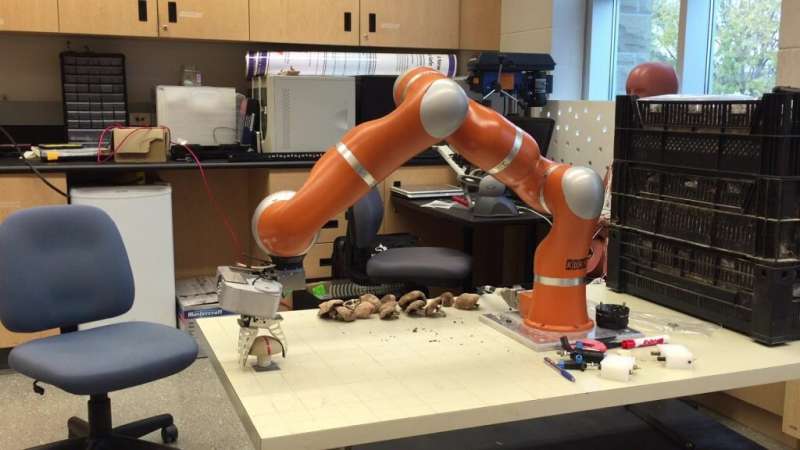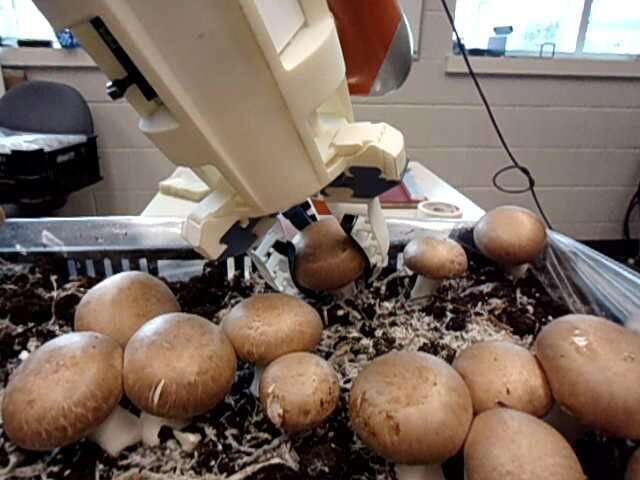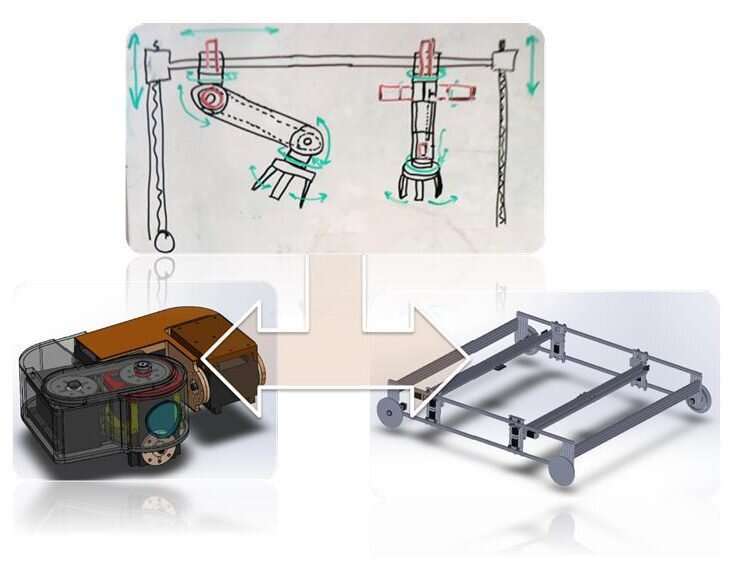Robotics researcher revolutionizes mushroom harvesting

Nearly 10 years ago, local mushroom farmer Murray Good approached engineering professor Mehrdad R. Kermani with a challenge. Could Kermani and his team develop an autonomous mushroom harvesting robot to address the labor shortage Good and mushroom farmers around the world were facing?
Kermani, a world leader in the field of safe human-robot interactions, knew this was a challenging problem that could take time. With patience, perseverance and the help of his graduate students, he developed the prototype for what is now the first commercialized robotic harvesting system of its kind.
"When we first started the project, we had no specific data or approaches to reference," Kermani said. "We basically started from scratch."
Kermani succeeded where several research institutes and private companies worldwide failed, designing a robot that could pick mushrooms at a speed and quality comparable to or beyond human harvesters. He also took an innovative approach, developing a system that seamlessly integrates into the existing infrastructure of mushroom farms across North America.
Beyond addressing the agricultural industry's manual labor shortage, Kermani's efforts also help answer the demand for sustainable agriculture, with an aim to end hunger and achieve food security, a challenge identified in the United Nations Sustainable Development Goals.
Getting a grip
Tasking robots with human actions isn't easy, with "grasping" as one of the more challenging motions to perfect. Humans, Kermani explained, grasp objects every day with little thought. In the case of picking mushrooms, they can look at a mushroom, determine if it is ripe, and grasp it with just the right amount of force.
"If you go to a mushroom farm, the first thing you notice is that mushrooms are very dense and there is quite a lot of them growing in the beds," Kermani said. "Humans have the dexterity to easily grasp the mushroom. From time to time, they may change their maneuver in order to pick it properly. It's not always the same movement. Sometimes they bend it, sometimes they twist it and sometimes it's a combination of both. It really depends on how they feel that mushroom.
"When you translate that into code for a machine, it's not a very intuitive thing," Kermani said.
His first prototype allowed him to experiment and perfect the picking mechanism, achieving a "soft touch," that avoided spoiling the easily-bruised mushrooms—an aspect other researchers hadn't achieved with previous suction cup models.
Kermani's second challenge was "teaching" the robot to recognize when a mushroom was ready to be picked. He designed a vision component to scan the mushroom by size; one of the key determinants of ripeness.

"Mushrooms grow very fast," he said. "In 24 hours, they double their size, which means once they're ripe, you have to pick them. If you pick them too early, you don't get the yield. If you pick them late, it doesn't last on the shelf. It's not like an apple or orange; you have a very limited window of time."
With the capability to work 24-hour shifts, Kermani's robotic system can scan a mushroom and, if it is not ripe, make note to return at just the right moment a few hours later.
The core areas of focus took about four and a half years to develop to the point where Kermani and his team could begin testing the system on Good's farm.
"This was a gradual process," Kermani said, crediting Good for his role as a "forward-thinking industry partner who embraced technology and provided crucial, continual feedback throughout the process."
Commercial success
Based on the success of Kermani's research projects, Good founded Mycionics in 2014, with the knowledge transferred for commercialization in 2018. Last summer, the company attracted supercluster funding from Next Generation Manufacturing Canada (NGen) to deploy and demonstrate the harvesting system.
To see research and knowledge transferred into an application that solves an important global challenge is "a very good feeling," Kermani said. "We know there's a shortage of labor, (and with an increasing global) population, we need to produce more food, and keep it at a sustainable price."

Next step: Plant propagation
Kermani is now applying the process he honed for harvesting mushrooms to plant propagation, working with a partner in LaSalle, Ont.
The company grows millions of seedlings for vegetables, which must be attached to wooden stakes before being shipped out to nurseries. Kermani is hoping to automate the process, but seedlings, like mushrooms, come with their own challenges. The vision system must consider the overlap of leaves, and the robotic mechanism must consider the tenderness of the stem and branches.
"These are not easy things to do," he said, but he's fueled by his previous success.
"There's a sense of relief after so many years of working and knowing you can have an impact," he said. "Once you start to see the transition between knowledge and practice, you get hooked."



















